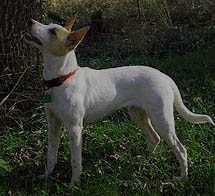
 Feist dog type and “breed”
Feist dog type and “breed”
Feist dogs are included on this hunting sites as they make up one of the minor and separate hunting dog groups. Note the Feist dog is a mixed breed TYPE of dog, and only two out of many variations are under consideration for breed recognition.
Feist dogs are also included here because they are now almost exclusively American. Known mostly in the Southern States of America. Not such much in Texas (shout out the my fellow Texan dog hunters) but more the Ozark Mountain and Southern Appalachian regions (where they were Further developed after their importation from the UK).
Feists dogs were originally created in Great Britain by farmers, miners, and field workers but that was a long time ago and the type of feist that exists today is mainly found in America, and has been breed considerably away from the original species of Feist.
The first thing you should be aware of is that the FEIST (like the CUR) is a type of dog, not a breed, they have been around for centuries, but are not a known breed because they continue to be breed locally with many different strains, and there has not been enough agreement with a specific type of feist for long enough to be attempted to be declared a breed by the major kennel clubs such as the AKC.
In fact, there exists an amazing array of variants of TYPE of feist (all similar in shape, attitude and size) but with nuances.
FEIST DOG ORIGIN BREEDS and ancestry
Almost exclusively used small terrier breeds including: Smooth Fox Terrier, Manchester Terrier, Jack Russell Terrier, White English Terrier ( extinct).
In America, the “Native American village dogs” were also added to add hardness for harsher environments and the hot south, while in other places, Whippets were added for speed and agility, and the Beagle for trailing abilities.
Many feists are also believed to be crosses from ” Treeing Walker hounds” which is a vital difference between terriers in that Feists ALL tree their prey.
The Treeing Feist has been recognized as an identifiable breed by the United Kennel Club in 1998. Though it is rumored that an American Feist now is claimed by the AKC.
“Various named varieties within the feist type umbrella have been developed, including the Mountain Feist which include the Baldwin Feist, Buckley Feist, Denmark Feist, Galla Creek Feist, Kemmer Feist, Lost Creek Feist, Sport bred Feist, and the Thornburg Feist. The Treeing Feist which include the Atomic Feist, Barger Feist, Boggs Creek, Cajun Squirrel Dogs, Charlie Feists, Fleming Creek Squirrel Dogs, Hickory Grounds Feist, Horse Creek Feists, Hurley Comb’s bred Feist, Mullins Feist, Riverun Feist, and the Rat Terrier. Both the National Kennel Club and the United Kennel Club recognize the Feist “breed”. ” (wikipedia)
Feists are typically developed from the terrier class and were originally ratters on UK farms but their targets have been widely increased in America. While they often resemble ratters, the main difference is that they work exclusively above ground to chase small prey such as squirrels as opposed to most terriers and dachshunds who are “earth dogs” and go to ground down holes to secure their prey (such as rats, rabbits, foxes, badgers).
The “standard” Feist is often confused in looks and behavior with jack russells and fox terriers, but there are many mass and subtle differences between these hunting breeds.
Feist dog Physical description
- Feists typically are small (shorter than 18 inches/45 cm) and (weigh up to 30 lbs/14 kg),
- They are ALL short-coated dogs with long legs and a pointed noses.
- Ears set high on the head erect, or short hang ears. The tail is a natural bobtail or if legal in the local area, are often docked.
- Predominantly white so as to be visible to hunters.
- To the novice many of the feist variations appear to look like jack russell breed dogs.
Feist Dog Hunting skills
Feists typically have an extreme desire to chase rabbits, squirrels, and rodents. And here in lies the rub. As feists are treeing dogs, and they don’t always pursue to the point of physically biting the animal, chasing animals that got to ground or warrens like rabbits and rats will often require other complimentary techniques such as ferrets to go into the burrows and retrieve the game.
Squirrels and any animal that lives or will find refuge above ground are the more preferred target for the feist.
Feists will use all of their senses to hunt their target (as opposed to specialty hunting dogs such as sight or scent hounds) and when they corner their target they tree them. Silent on the chase they change to loud barking and circling the tree to alert the hunter to their success. In this way the feist draws similar hunting technique to the many varieties of coonhound and their hunt for raccoons.
Feists are as motivated and single minded in getting their squirrel as beagles are at following a scent or coonhounds in pursuing raccoons. There is very little that will stop the pursuit unless a hunter has exceptional control over their dog.